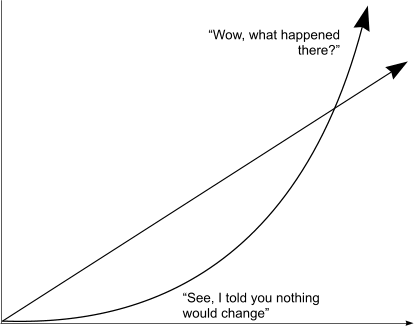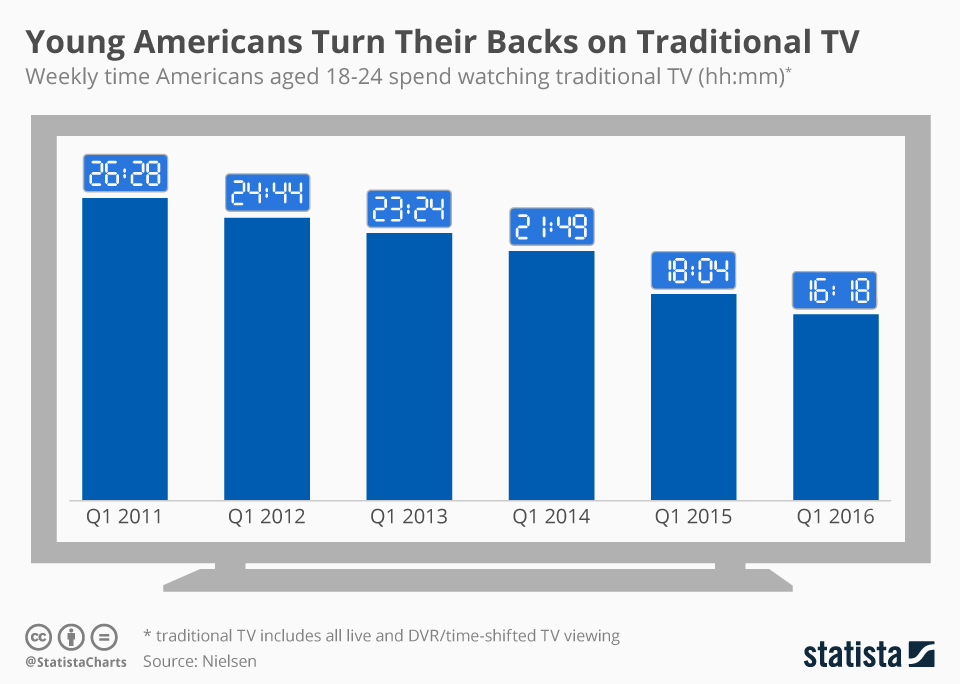It’s often said about we humans that we are very bad at understanding and dealing with exponential change. And yet, that is the nature of a lot of the changes in the technology world in displays or in the systems that drive those displays. We tend to think that change will be linear and gradual.

However, exponential change starts relatively slowly and then accelerates very quickly. Early on, the level of change is less than many expect, but then, apparently suddenly, there is radical change. That’s when change ‘suddenly’ takes people by surprise.

An example of this kind of trend was the switch from film to digital in photography. Digital was an interesting niche for a long time. Around 2001, I bought a digital photographic print from ‘the digital Ansel Adams’, Stephen Johnson, when I was in San Francisco. It’s a monochrome image of a woodland, taken with an infrared camera and it used a special camera to capture 27 megapixels – which seemed huge resolution at the time. I loved the picture as the high resolution camera had a slow exposure time, so the static details on the treetrunks were pin-sharp, but the leaves, which moved during the exposure, were smudged like paint strokes. The effect was magnified by the use of a printer with multiple grey level inks.
Although I had a digital camera for news operations at the time, it was just one megapixel, and sold by Kodak. It was dramatically more convenient for newsletter use, but the quality was pretty horrible. The print was around 55″ in diagonal (don’t ask how much the frame cost as it has to protect the print from fading and needed multi-coated glass!) and looked very sharp.
So, getting back to change, by the beginning of 2012, Kodak had to file for Chapter 11 as the digital camera market exploded and we got to the “Wow, what happened?” moment. The company had developed its first digital camera as long ago as 1975, but it was really the years from just after the start of the new century to 2007/2008 that really saw the market grow hugely, effectively eliminating the Kodak film business, which was a key source of revenue.
Now TV is facing that kind of change.
TV Hitting Fast Change
These thoughts were triggered by some data from Nielsen in the US, and graphed by Statista, which showed a big drop in the TV watching habits of young Americans (18-24), who have dropped by nearly 40% in their time spent watching traditional TV. (The report can be downloaded from Nielsen) This, it seems to me, shows that the switch will really start to gather steam.

At the moment, 18-24s are not generally going to have their own homes, but in a few short years, they will have and I suspect that they will organise their homes differently from older viewers that often centred the living room in the home around the TV.
My attention was drawn to this chart partly by the speed of the change. The development of TV broadcasting has been incredibly steady and slow. It’s a complicated business and to see a shift of almost 40% in viewing patterns in just five years is unprecedented, in my experience.
I gave the keynote speech at the launch of the Panasonic VieraCast smartTV in 2009, when I said that this kind of change would happen and even though I know about the effect of exponential change, I must admit to having thought many times over the last few years “I see that nothing much is changing”. The speed of the change highlighted by Nielsen shows that the big wave of change is really here!
Bob


